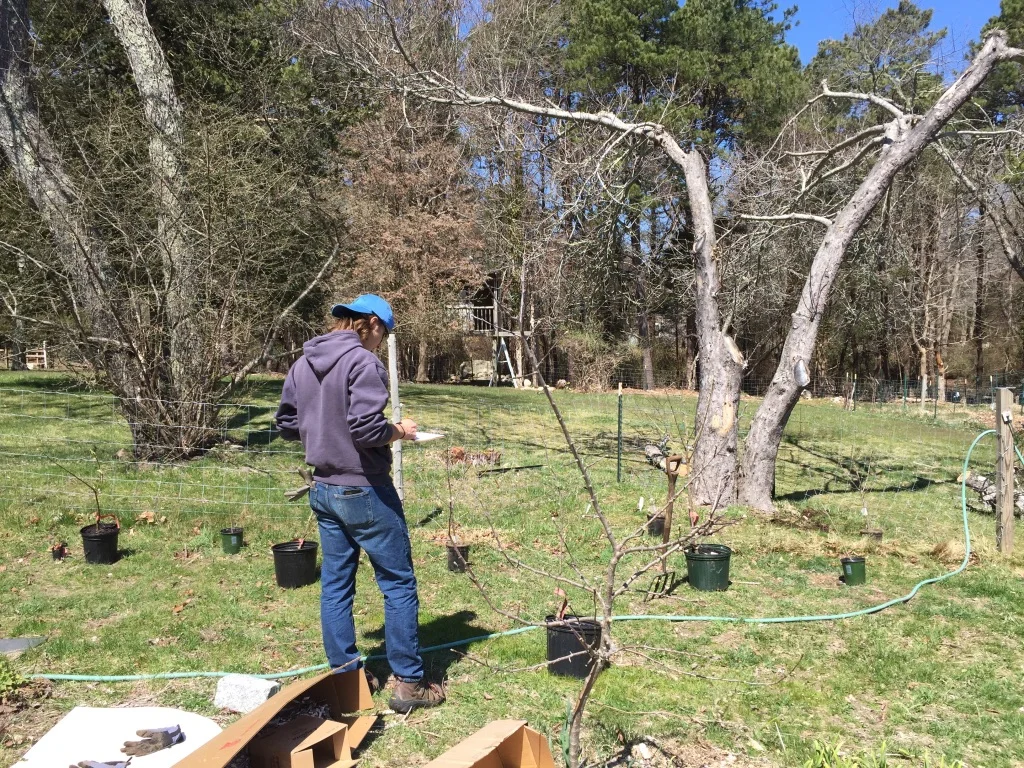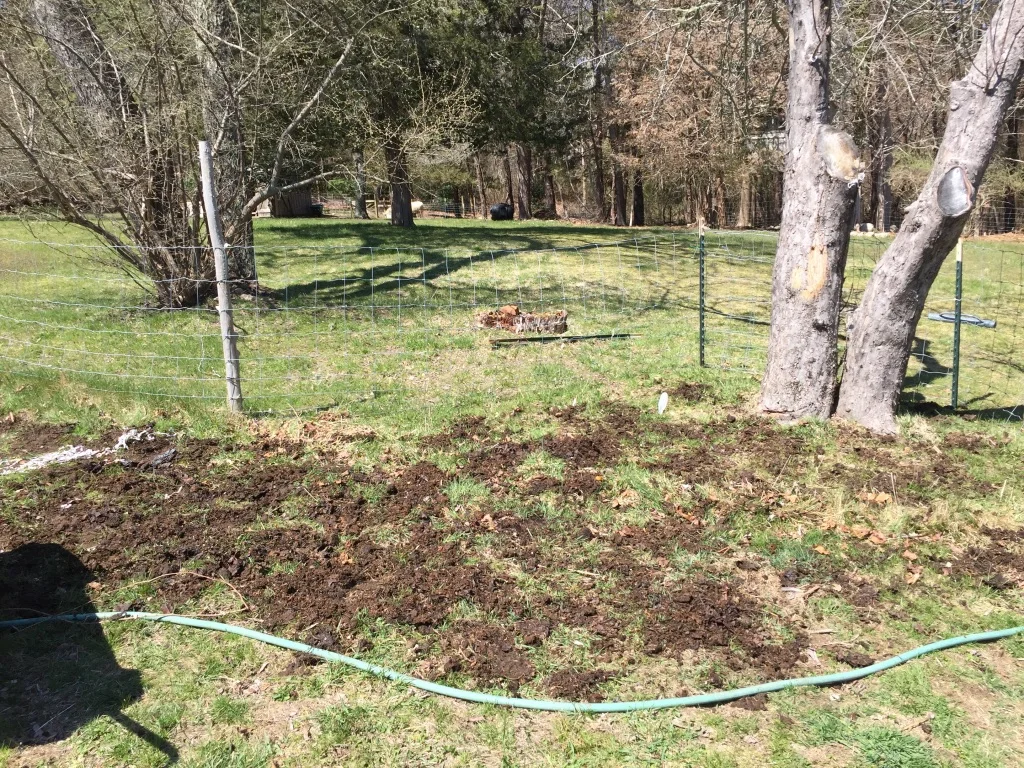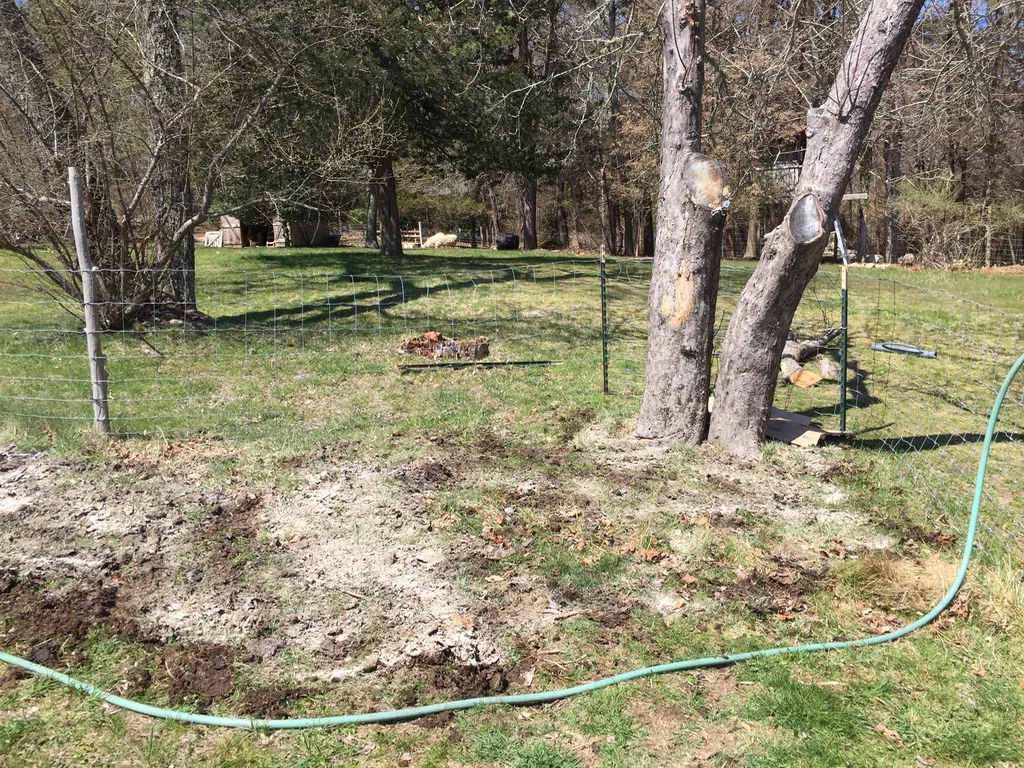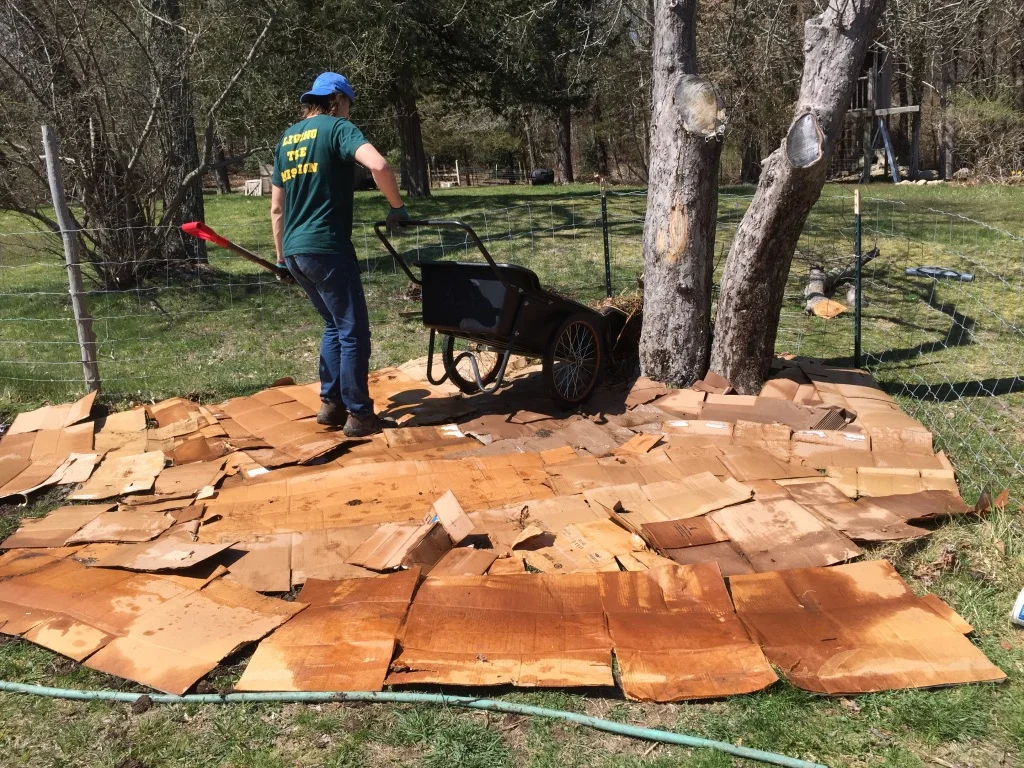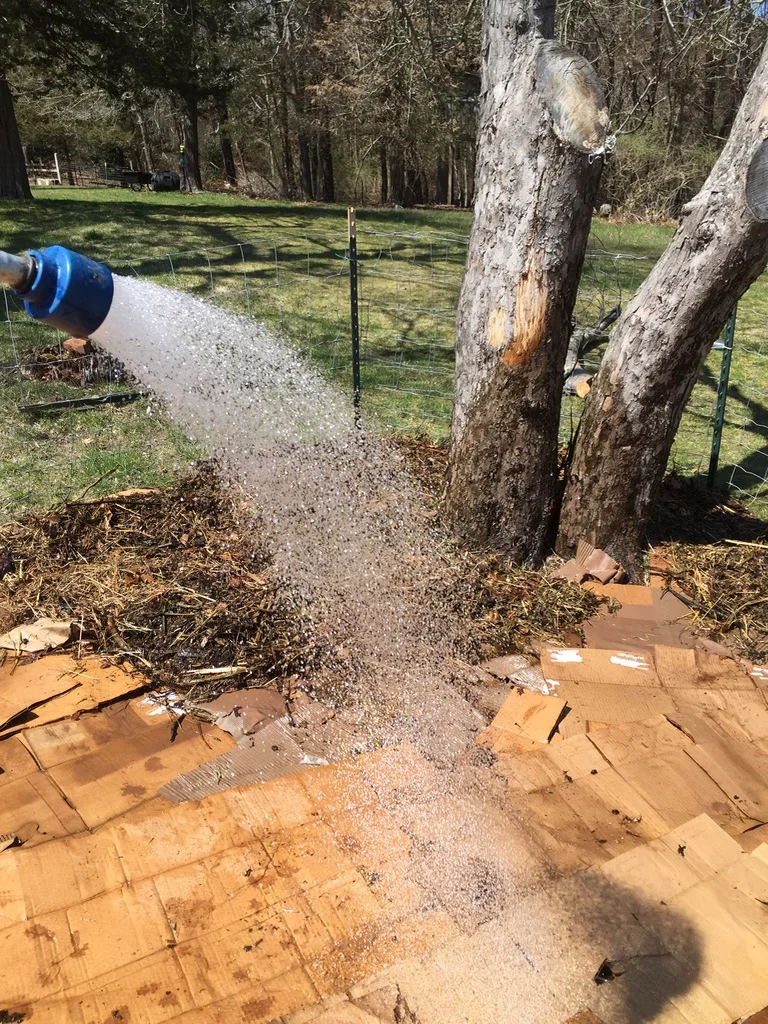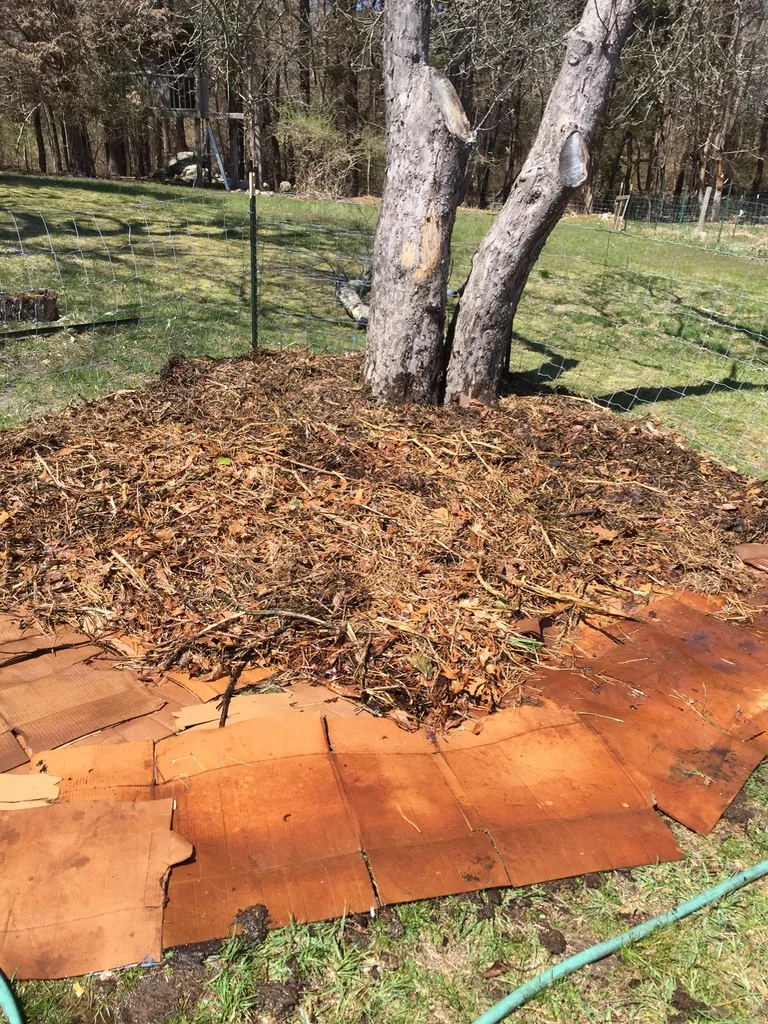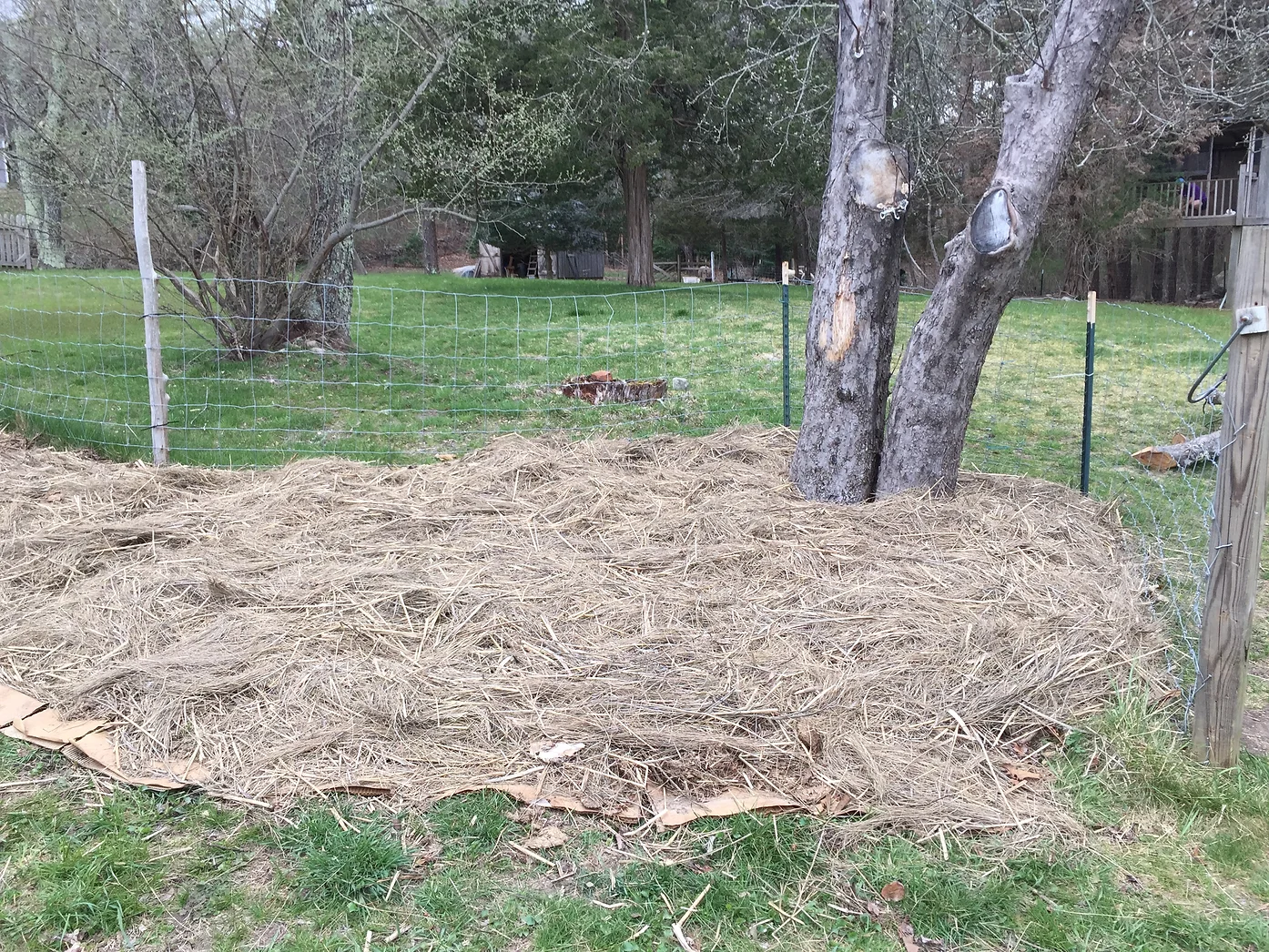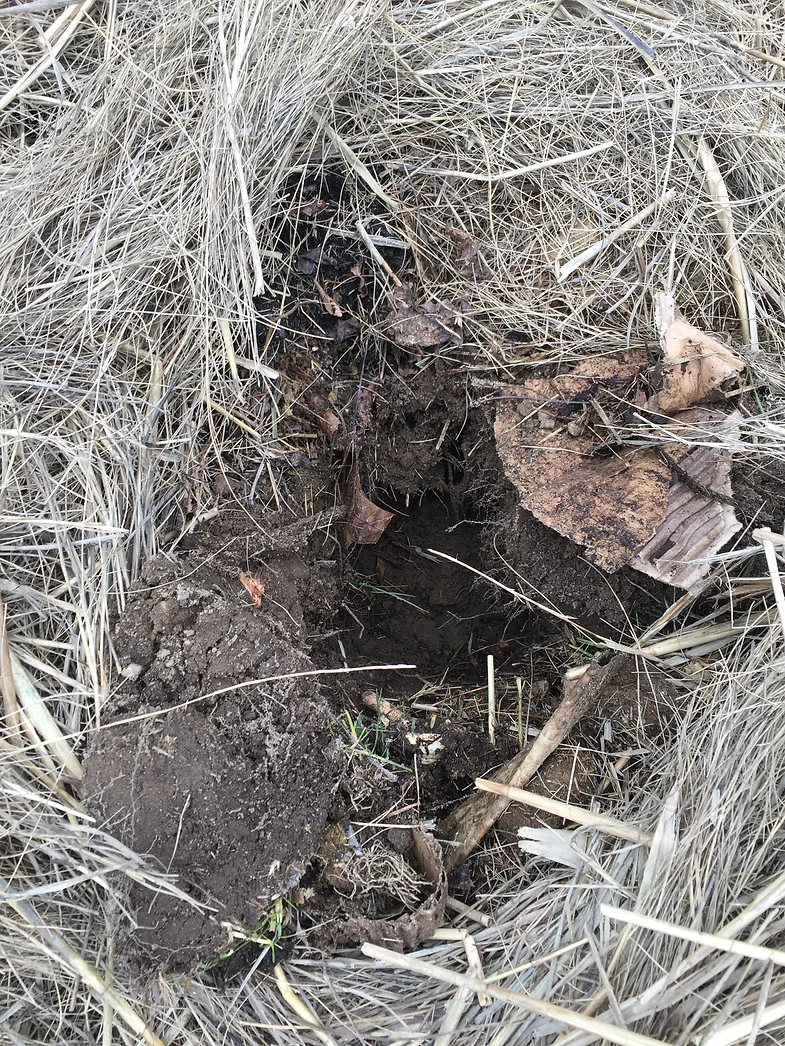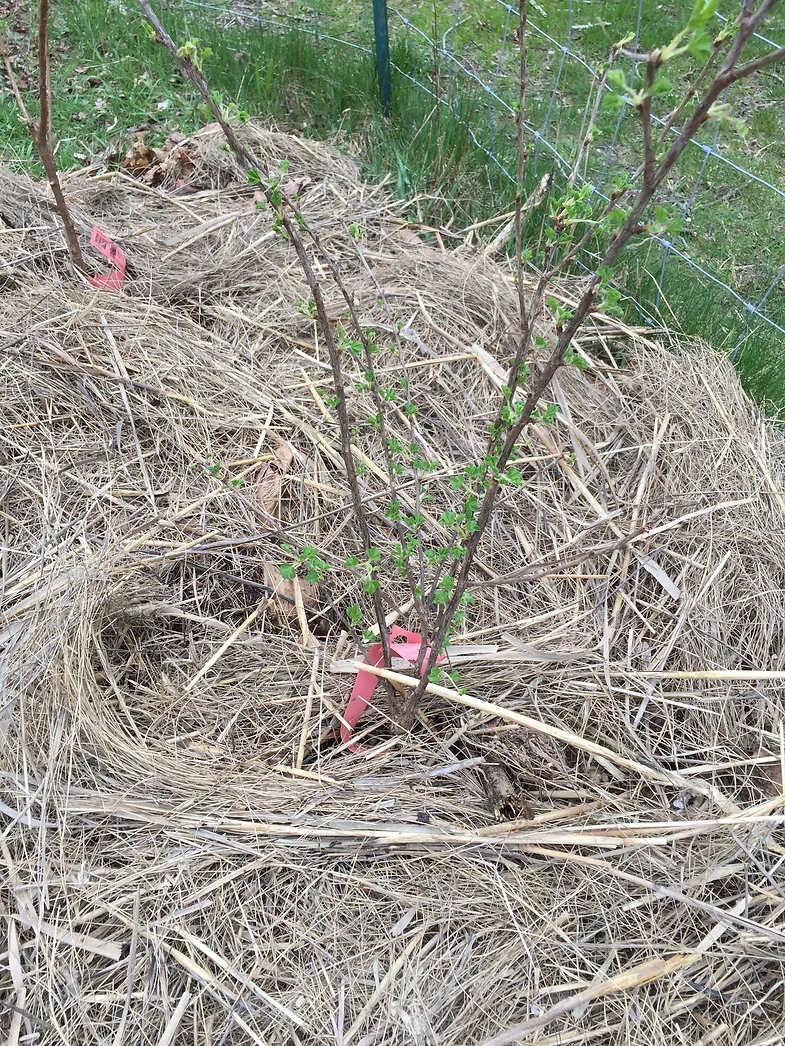Sheet Mulching
Sheet mulching is probably the best way to build organic matter and microorganisms into the soil. By composting in place, you are allowing all the by-products of composting to actually be utilized by the plants you are trying to benefit.
Every time you turn a compost pile or dig into your compost to bring it to the garden, you are killing millions of organisms simply by exposing them to air and sunshine. Colonies of fungi and bacteria are busily creating a network of communication and chemistry, all beneficial to our plants. So composting in place, also called sheet composting or sheet mulching, is preferred.
You can use various techniques for sheet mulching. But some basic concepts should be kept in mind: just as with building a compost pile, you want about 2/3 “browns,” or carbon sources, to 1/3 “greens,” or nitrogen sources (manure being a nitrogen source, though not green in color). Be sure to water all the layers well.
Sheet mulching can be as easy as placing down layers of cardboard followed by wood chips on top or as extravagant as a 16-layer cake.
Here is a list of some good materials for sheet mulching.
"Greens," or nitrogen-rich materials:
Grass clippings
Compost
Manure
Fresh weeds (without seeds)
Waste produce from the kitchen
Blood meal
Seaweed
Coffee grounds
And "browns" that are carbon-rich materials:
Cardboard
Newspaper
Straw
Dried leaves
Wood shavings or chips
Bark
You want to alternate the greens and the browns, and you also want to be sure to layer in some compost to introduce micro- and macro-organisms into the pile.
Finish up your sheet mulching project with some wood chips to encourage fungal microorganisms, increasing diversity and resilience. Watch these slides to see the process:
